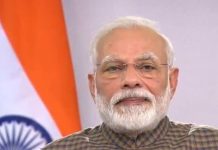
On the eve of the second players’ auction in early 2009, Lalit Modi, the then commissioner of the Indian Premier League (IPL) who was later disgraced and sacked, proclaimed that the league was “recession proof”. He reiterated it in 2010, weeks before he was unceremoniously removed by the Board of Control for Cricket in India (BCCI). Even as the world was quaked by the financial crisis of 2008, IPL spent more money, and the Board and TV broadcaster earned higher profits.
It seemed like a hunky dory ride. Until the house of cards came crashing down several times — first in 2010 with Modi’s scandals, match-fixing scandals in 2012 and 2013, restrictions on N Srinivasan, the former BCCI president, to contest the Board’s elections in 2015 and, finally, the suspension of two IPL teams — Chennai Super Kings (CSK) and Rajasthan Royals — for two years. This may be the beginning of the end of the grandiose league that was once valued at over $4 billion. This is definitely the end of IPL and, possibly, BCCI, as we have known them for the past few years.
The maverick, yet allegedly corrupt, Modi thought he had married several economic theories — from capitalism to socialism, rational behaviour to game theory — to devise a brilliant cricketcum- business model. He was confident that his explosive mix of cricket, commercialisation and entertainment would prove to be a win-win for all the stakeholders — players, teams, franchise owners, broadcaster, sponsors, advertisers, fans and, of course, BCCI and its affiliate associations.
However, Modi and subsequent BCCI administrators failed to see the inherent flaws in the IPL model. They forgot to account for new economic theories based on behaviour sciences and psychology that pinpoint the role that greed plays in the decision taken by various economic agents. They didn’t understand that rational individuals and firms can act irrational and naturally acquire a herd mentality. In the end, IPL was always a combustible mixture waiting for a spark.
Socialistic capitalism
IPL’s business architecture had several interesting facets. First was the purely market-driven capitalist mindset that forced the potential team owners to furiously compete to bag the various franchisees and buy global players. Several open auctions were held to openly bid for players, which was telecast live so that the viewers got the feel of the intensity, aggression and competitive spirit of these auctions. City franchisees were sold twice through tenders that were opened only in front of the bidders. Everything seemed open, transparent and corruption-free.
Modi added a few socialist features to the model to woo potential bidders and global players to participate in the tenders and auctions. One, the team owners were told that they could pay the amount they bid for the franchisees in ten equal annual instalments. Thus, an owner who bid $100 million had to pay a mere $10 million each year for the next ten years. Two, the teams would equally share a sizeable proportion of the money which the BCCI got from the broadcaster and league’s sponsors.
All the teams were assured of annual prize monies, whatever may be their ranking in the league. Thus, the teams were assured of fixed earnings each year, which could be as high as $15 million or more than the $11.19 million that the most expensive franchise, Mumbai Indians, had to pay each year to buy the team. Initially, IPL had eight city teams; together they could earn $120 million a year as their share of the BCCI booty, compared to their combined outgo of $72.3 million on buying the franchisees.
The teams could also get local sponsorship — on players’ shirts and in-stadia advertisements for home games – and pocket this money, along with the revenues from sale of tickets for home games. There was a cap on what the owners could spend in the players’ auction and pay to the local players. If the teams managed their finances well, they could break even or earn a profit in the first year. Two teams, Rajasthan Royals and Kolkata Knight Riders, were profitable in the first season (2008).
A similar capitalist-socialist model was designed for the state associations and players. Players who would be auctioned had two choices: they could either refuse to participate in the auction and accept a fixed payment from the BCCI to play in the IPL, or they could leave their remuneration to the market forces. However, BCCI put a cap on foreign players and insisted that the owners had to recruit a fixed number of local players, who had to be paid specified salaries. In a jiffy, several unknown and young players made huge sums, which changed theirs and their families’ lives.













